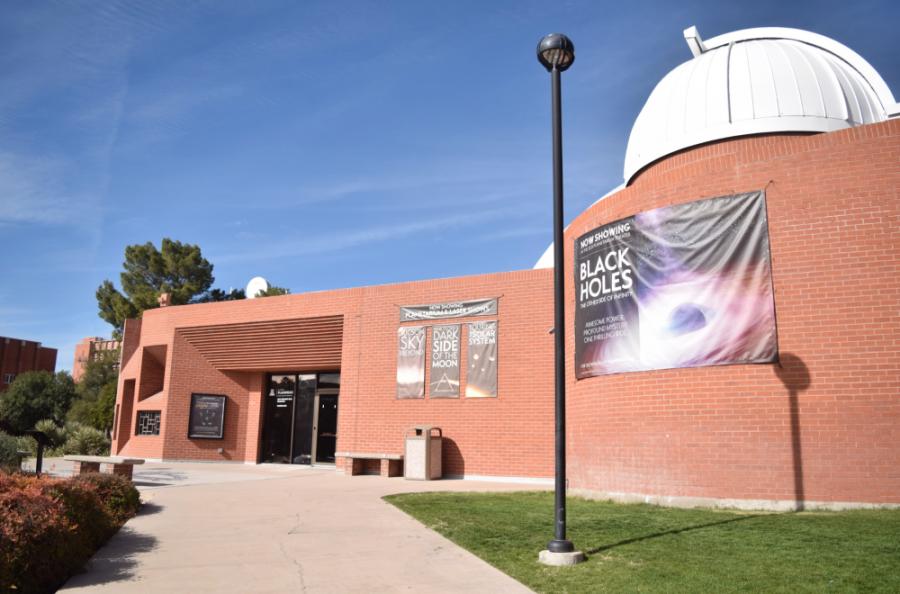On Wednesday, April 10, the scientists working on the Event Horizon Telescope released the first-ever photograph of a black hole. In conjunction, Flandrau Science Center and Planetarium hosted a limited showing of “Black Holes: The Other Side of Infinity,” followed by a presentation about the EHT announcement.
The limited showing began Wednesday, April 10, and goes through Sunday, April 14.
The 2006 documentary ran 25 minutes long and was narrated by Liam Neeson. It included simulations of black holes, supernovae and the galaxies; information on how black holes are formed and what they may look like and the science that has gone into understanding them.
RELATED: New discoveries on the horizon thanks to grand student’s black hole research
At the end of the Friday showing, planetarium operator Bryce Muse gave a presentation on the recently released image of a black hole. The photo was captured by the EHT, a network of eight telescopes located across the globe.
Two of the eight telescopes were operated by University of Arizona astronomy teams.
The black hole was found in a galaxy known as M87. It is three million times the size of Earth and located 55 million light-years away, according to BBC and Science News. Scientists have described it as “a monster.”
Muse also showed size comparisons of multiple stars in the galaxy and talked about the amount of mass the stars have, which contributes to if the star will turn into a black hole.
“The important thing with building a black hole is not the size of the star, per se, but the mass – the amount of stuff,” Muse said during the presentation.
The Event Horizon Telescope’s website states the black hole in the photo has a mass 6.5 billion times the sun.
Muse said the photo of the black hole only verifies what astronomers originally thought.
“Black holes are complicated, but we’re slowly getting better at knowing what the hell is going on,” Muse said.
He said Flandrau has done the black hole showing before, but with the release of the photo, they decided to show it again for “special occasion.” The previous showings lacked the presentation at the end, according to Muse.
This special occasion brought a father and daughter from St. Louis to the Friday-night showing at Flandrau.
Brian Luckerman and his daughter, Kate, traveled to Tucson for Kate’s Admitted Student Day. Luckerman said they came a day early and decided to go to Flandrau to see the show.
“[Kate] is interested in physics, an astrophysics major,” Luckerman said. “With all the things going on this week in the news, we saw [the showing listed] and thought it’d be pretty good to see.”
The Luckermans both enjoyed the show and said they learned a lot.
At the end of the presentation, the full-dome version of a music video, ”Monsters of the Cosmos,” was played. It’s from the album Symphony of Science by John D. Boswell. The video used manipulated audio and video of popular scientists, creating an electronic-style song about the basics of black holes.
RELATED: Incoming UA professor to study previously unopened moon samples
One guest at Flandrau said she planned to request the music video if it wasn’t already going to be played.
Muse said his favorite part of the showing is “Monsters of the Cosmos.”
“It’s the thing that got me to want to get a job here,” Muse said. “It helps bridge the gap between stupid hard science, which is black holes, and life, really. Any average Joe could watch that and get a general idea.”
Flandrau is showing “Black Holes: The Other Side of Infinity” as part of the broader “Black Holes: EHT Edition” on Saturday, April 13, at 1 p.m. and 6 p.m. and again on Sunday, April 14, at 3 p.m.
Follow Quincy Sinek on Twitter















